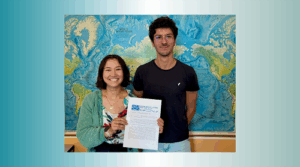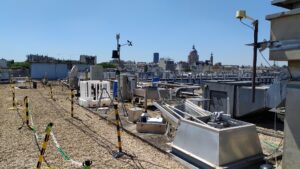CDD
Impact of snow-atmosphere exchanges on the isotopic composition of Antarctic snow
Contexte
This post-doctoral research position is part of the ERC Synergy AWACA project (Atmospheric WAter Cycle over Antarctica, past, present & future, https://awaca.ipsl.fr/), which aims to advance the understanding of the atmospheric water cycle in Antarctica.
The project is based on innovative observations of tropospheric meteorological conditions and isotopic composition of water vapour, clouds and precipitation along a transect between the Dumont d’Urville station on the coast and the Concordia station on the East Antarctic interior plateau (Adélie Land). Specific model developments are planned to interpret these observations, and our better understanding of the processes will in turn enable us to improve global and regional climate models in Antarctica.
Description
Recent studies have highlighted that sublimation and condensation within the atmospheric boundary layer modify the isotopic composition of Antarctic surface snow. Quantifying these processes and including them in atmospheric models equipped with isotopes is crucial for advancing the interpretation of the isotopic signal from ice cores in terms of climate variability. The aim of this research position is to quantify snow-atmosphere isotope exchanges from observations, and to implement the missing first-order processes in the IPSL LMDZ atmospheric model.
This project is at the interface between observations and modelling. Observations include isotopic composition of vapour, precipitation and surface snow, and meteorological observations, such as turbulent fluxes and transport of snow by the wind (available at Dumont d’Urville and Concordia, new on the AWACA transect). Modelling will be conducted with the LMDZiso global atmospheric model, which already performs well in terms of the isotopic composition of precipitation in Antarctica, but which needs improvements for snow-atmosphere isotopic processes. LMDZiso can be used in regional and global configurations, which facilitates the implementation and testing of new parameterisations in the model.
The researcher will:
- Use observations in snow and water vapour in Antarctica, as well as the literature, to derive how sublimation/condensation conditions impact isotopes in surface snow.
- Transfer the understanding of snow-atmosphere isotope exchanges into the LMDZiso global atmospheric model.
- Perform LMDZiso simulations, with and without the influence of snow-atmosphere isotopic exchanges, to quantify the influence of these processes on the isotopic composition of surface snow at the scale of the Antarctic ice sheet for present-day climate.
Salary
2600 to 2900 € net/month, depending on experience.
Application
Send a CV and a letter of motivation to Cécile Agosta and Valérie Masson-Delmotte (, ) with the email title « AWACA PD-SnowClimIso ».
Compétences requises
The candidate should demonstrate (1) a solid background in atmospheric boundary layer physics or in snow physics, (2) experience in data analysis and scientific programming, and (3) scientific writing and communication skills.
Experience in exploiting observations to derive physical processes, and in implementing parameterizations in models, is desirable, as these will be central to the research activities of this position. Additional, but not mandatory, skills include experience in water isotope fractionation processes. In addition to scientific expertise, the successful candidate is expected to work effectively in a team. The position requires a candidate who is proactive, rigorous, and capable of taking initiative to drive research projects forward.






